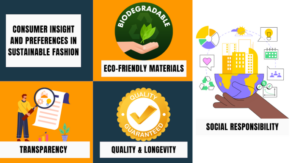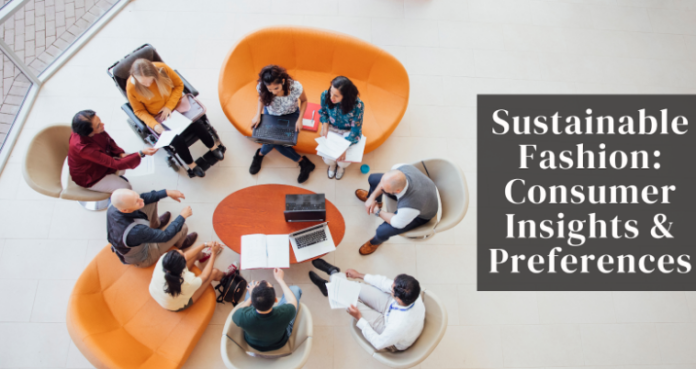Sustainable Fashion: Consumer Insights & Preferences
Previously considered a sphere of mass change and mass production, the fashion industry has been experiencing substantial ingredient changes. Sustainable fashion has become a boiling, powerful movement, going hand in hand with environmental issues in the slow, strategic changing of consumer preferences.
Staying ahead thus requires assessing consumer opinions and shaping their perceptions. Brands are turning toward qualitative market research more and more in order to try to tap into this. This article discusses qualitative marketing research, mobile ethnography, and other qualitative tools in understanding the sustainable fashion landscape.
Understanding Sustainable Fashion
Sustainable fashion refers to practices in the fashion world that work toward decreasing the impacts, whether environmental or social, of producing clothing. This includes materials, how they are made, and the conditions under which the labor is carried out.
Simultaneously, consumers are increasingly aware of the environmental and social impacts of their fashion choices, leading to a growing preference for sustainable alternatives.
Qualitative Market Research
Qualitative market research adds value to understanding the meaning behind the motivations, attitudes, and behaviors of the consumers toward sustainable fashion. While quantitative research is conducted through numerical data and statistical analysis, qualitative insights dig deeper to examine the reasons behind certain behavior or action.
Qualitative Marketing Research Methods
Qualitative research techniques offer richness, texture, and understanding:
In-Depth Interviews: A one-on-one interview with consumers can be taken to elaborate further and bring up their ideas, feelings, and attitudes about sustainable fashion.
Focus Groups: Bringing a group of consumers together to discuss sustainable fashion enables the researcher to observe the group’s dynamics in finding common approaches, beliefs, and attitudes.
Mobile Ethnography: This new way of gathering research captures consumers’ interactions with sustainable fashion through mobile devices in their natural settings. It gives a real-time, authentic review of consumer behavior.
Online Ethnography: This is almost the same as mobile ethnography, the only major difference being an investigation into the consumers’ interactions online with sustainable fashion brands and communities for an understanding of how consumers relate to the brands on social media and other online platforms.
Insights and Preferences of the Consumers in Regard to Sustainable Fashion
Because the methods that follow are qualitative, a significant number of some of the most important consumer insights and preferences in regard to sustainable fashion that may be captured are the following:
Transparency
Sustainability is one area in which customers are demanding transparency from fashion brands. More specifically, they want information about the type of material, where it originated, the process used in its manufacturing, and the labor conditions.
Brands that communicate clearly and honestly in this area are more likely to earn consumer trust and loyalty.
Eco-Friendly Materials
Consumers are increasingly opting for eco-friendly materials in clothing, with organic cotton, recycled fabrics, and biodegradable fibers leading the way. Of course, the main environmental impacts of the production processes that consumers are looking at include emissions in water use and carbon emissions.
Quality and Longevity
Consumers of sustainable fashion are seeking quality and durability in fashion pieces beyond fast fashion trends. They’d rather invest in timeless, well-made pieces that last longer and don’t require frequent replacement.
Social Responsibility
The social responsibility of brands towards the environment, fair wages, safe working conditions, and ethical treatment of workers are increasingly under the consumer’s scope.

Better Insights Using Qual Tools
The researchers use the following qual platforms and tools to gather their qualitative insights:
Qualitative Research Platform: A qualitative research platform includes all the relevant tools needed in the accomplishment and management of a qualitative research project in one single central platform. It includes participant recruitment, conducting interviews and focus groups, and data analysis.
Mobile Qualitative Studies: Mobile qualitative simply refers to the use of mobile devices in the conduct of research as consumers naturally go about their activities on a day-to-day basis. It will help marketers capture the spontaneous reactions and behaviors of consumers.
Mobile Ethnography: Mobile ethnography can be focused on mobile devices within the subset of mobile qualitative research to document consumers as they interact with sustainable fashion in their daily lives.
Case Studies: Success Stories in Sustainable Fashion
A great deal of qualitative research has already been undertaken by numerous brands to understand and react to the desires of consumers wanting a more sustainable approach to fashion.
Case Study 1: Patagonia
Patagonia is famous for its sustainable approach to outdoor clothing. The qualitative piece, which is head and shoulders above the others, comes out of the long history and struggle of Patagonia. Based on deep interviewing, the information is mobile ethnography; the values and preferences of the consumers of the brand.
This type of study has influenced the brand to push for the use of recycled materials, reduction of environmental impact, and ethical labor practices. The transparency and authenticity with which Patagonia treats its consumers have paid off by building strong brand loyalty.
Case Study 2: Everlane
Everlane is a DTC fashion brand that focuses on radical transparency within all its operations. Everlane has been able to relate to consumers who are looking for transparency and other ethical considerations through the use of focus groups and online ethnographies.
More of the information includes cost breakdowns, factory locations for manufacture, and materials used for making a product. This kind of transparency has made the brand trusted by consumers who care about the sustainability of fashion.
The Future of Sustainable Fashion and Qualitative Research
Qualitative research will be an important tool for brands in the growing demand for sustainable fashion. One can then only guess that the more Artificial Intelligence and Machine Learning low- quantity research has been used, it will be more robustly developed and will tend towards the ability to answer a lot more questions than low-quantity studies now do.
Artificial Intelligence and Machine Learning: These technologies can also be used for implementing more personalized and targeted marketing strategies in a way that means something to the particular insights of the consumers who purchase sustainable fashion.
Increased Use of Mobile and Online Ethnography: With each progressive day and the increasing dependency on the digital channel, mobile and online ethnography will keep gaining its utmost importance in the coming days.
Conclusion
Sustainable fashion is not a trend. It’s a movement powered, to a large extent, by an undercurrent shift in basic consumer values and preferences. Some of these insights into the consumer can best be ascertained by a qualitative market survey incorporating, say, in-depth interviews, focus groups, mobile ethnography, and online ethnography.
With advanced qualitative tools and platforms, brands can gather detailed and action-driving qualitative insights to inform their strategies on sustainability in a way that better resonates with conscious consumers.
A link with consumer preferences is important for further development of modern fashion industries. Qualitative research that is done by brands committed to sustainability can get a sense of the nuanced motivations and behaviors of their consumers, leading to the chance of building trust, loyalty, and a sustainable future in fashion.
FAQs
What is sustainable fashion?
Sustainable fashion men’s clothing and accessories that are produced and distributed in an environmentally and ethically sound way. An approach that takes into consideration the entire lifecycle to minimize ecological impact in both production and distribution.
Why is sustainable fashion important?
Sustainable fashion is a way of addressing these environmental and social issues that have been associated with the traditional fashion industry. Key issues often revolve around reducing waste, thus reducing the level of carbon emissions, conserving resources, and the ethical treatment of workers.
How do consumers feel about sustainable fashion?
Consumers for sustainable fashion are growing at a very swift pace, and, moreover, most consumers are becoming aware of environmental and social considerations for shopping; hence, most look for brands that align with their values. They prefer transparency, quality, and ethical practices within the brands they choose.
